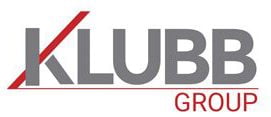The Health and Safety at Work etc. Act 1974 (HSWA) is the primary piece of legislation covering occupational health and safety in the United Kingdom. Various regulations made under this Act have been implemented to ensure the safety, health, and welfare of people at work. Prior to Brexit, many of these regulations gave effect to European Union directives. Here are some key regulations made under the HSWA:
The Health and Safety at Work story
The Health and Safety at Work Act 1974 was created by the Parliament of the United Kingdom and received Royal Assent on July 31, 1974. The Act was developed in response to growing concerns about workplace safety and the need for a comprehensive approach to occupational health and safety regulation. It was a significant legislative milestone aimed at consolidating and improving various health and safety laws in the UK.
The Act itself was influenced by the work of the Robens Committee, which was established in 1970 to review the existing health and safety laws and make recommendations for improvements. The committee was chaired by Lord Robens, a prominent figure in the field of industrial relations and safety. The committee’s report, published in 1972, highlighted the need for a more unified and proactive approach to health and safety at work, leading to the creation of the Health and Safety at Work etc. Act 1974.
Subsequent regulations made under this Act have been developed and implemented over the years by various government bodies, including the Health and Safety Executive (HSE), to address specific risks and ensure compliance with evolving safety standards and requirements, often influenced by European Union directives prior to Brexit.
The main regulations
- The Management of Health and Safety at Work Regulations 1999 (MHSWR) require employers to carry out comprehensive risk assessments to identify potential hazards in the workplace and implement necessary measures to mitigate these risks. Employers must also appoint competent individuals to manage health and safety, establish emergency procedures, and provide adequate information and training to employees.
- Under the Control of Substances Hazardous to Health Regulations 2002 (COSHH), employers are obligated to control substances that can harm workers’ health. This involves conducting risk assessments, implementing appropriate control measures, conducting health surveillance, and ensuring that employees receive proper information, instruction, and training regarding the handling of hazardous substances.
- The Workplace (Health, Safety and Welfare) Regulations 1992 address a wide range of basic health, safety, and welfare issues applicable to most workplaces. These regulations set standards for the working environment, including requirements for adequate seating, lighting, ventilation, and sanitation facilities.
- The Provision and Use of Work Equipment Regulations 1998 (PUWER) ensure that any equipment provided for use at work is suitable for its intended purpose and safe to use. Employers must maintain this equipment in a safe condition and ensure that users receive adequate information, instruction, and training.
- The Manual Handling Operations Regulations 1992 mandate that employers avoid hazardous manual handling operations wherever possible. When such operations cannot be avoided, employers must conduct risk assessments and take measures to reduce the risk of injury to the lowest level reasonably practicable.
- The Personal Protective Equipment at Work Regulations 1992 (PPE Regulations) require employers to supply and ensure the use of personal protective equipment (PPE) whenever there are risks to health and safety that cannot be controlled by other means. Employers must also provide information, instruction, and training on the correct use of PPE.
- The Health and Safety (Display Screen Equipment) Regulations 1992 establish requirements for work involving display screen equipment, such as computers. These regulations ensure that users have adequate breaks, that the equipment is suitable for use, and that users receive proper training to use the equipment safely.
- The Control of Noise at Work Regulations 2005 aim to protect workers from the harmful effects of excessive noise in the workplace. Employers are required to conduct risk assessments, implement control measures to reduce noise exposure, and provide hearing protection and health surveillance as necessary.
- The Control of Vibration at Work Regulations 2005 require employers to manage the risks associated with exposure to vibration in the workplace. This includes conducting risk assessments, implementing control measures, and providing health surveillance to prevent conditions such as hand-arm vibration syndrome.
- The Construction (Design and Management) Regulations 2015 (CDM Regulations) outline the requirements for managing health, safety, and welfare on construction projects. These regulations impose duties on clients, designers, and contractors to ensure that health and safety is considered throughout the construction process, from planning and design to execution and completion.
- The Reporting of Injuries, Diseases and Dangerous Occurrences Regulations 2013 (RIDDOR) require employers, self-employed individuals, and those in control of premises to report specified workplace incidents, injuries, diseases, and dangerous occurrences. This reporting helps authorities monitor and investigate serious workplace accidents and incidents.
- The Control of Asbestos Regulations 2012 aim to protect workers from the dangers of asbestos exposure. Employers must conduct risk assessments, implement measures to control exposure, and provide information, instruction, and training to employees who may come into contact with asbestos.
- The Electricity at Work Regulations 1989 are designed to prevent death or personal injury from electrical hazards in the workplace. These regulations impose duties on employers and others to ensure electrical installations and equipment are safe and properly maintained.
- The Lifting Operations and Lifting Equipment Regulations 1998 (LOLER) ensure the safe use of lifting equipment in the workplace. Employers must ensure that lifting operations are properly planned and supervised and that lifting equipment is regularly inspected and maintained.
Books about Health and Safety Regulations
- Several legitimate books about Health and Safety are published and considered as references. We will introduce you to some of them here.
- “Introduction to Health and Safety at Work” written by Phil Hughes and Ed Ferrett and published in 2015 (6th edition)
- “Health and Safety at Work: Key Terms” written by Jeremy Stranks and published in 2007
- “Health and Safety at Work For Dummies” written by RRC and published in 2016
- “Tolley’s Health and Safety at Work Handbook” published in 2021 (33rd edition)
- “Safety and Health for Engineers” written by Roger L. Brauer and published in 2022 (4th edition)
- “Occupational Health and Safety Management: A Practical Approach” written by Charles D. Reese and published in 2015 (3rd edition)
- “Principles of Health and Safety at Work” written by Allan St John Holt and Jim Allen and published in 2015 (8th edition)
- “International Health and Safety at Work: for the NEBOSH International General Certificate” written by Phil Hughes and Ed Ferrett and published in 2015 (3rd edition)
- “Workplace Health and Safety: International Perspectives on Worker Representation” written by David Walters and Theo Nichols and published in 2009
- “Risk Assessment: A Practical Guide to Assessing Operational Risks” written by Georgi Popov, Bruce K. Lyon, and Bruce Hollcroft and published in 2016






